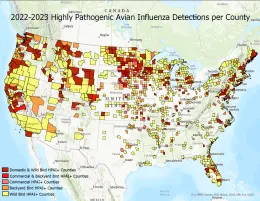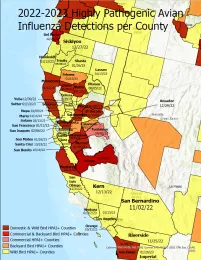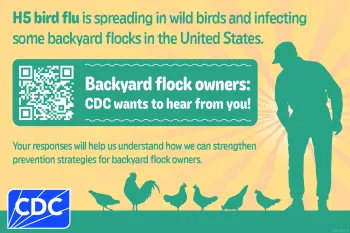
The Centers for Disease Control (CDC) is interested in learning more about backyard flock owners and their flocks. The anonymous survey asks about:
● Characteristics of backyard flock owners, their families, and their flocks.
● Knowledge of H5 bird flu and signs and symptoms of H5 bird flu in birds and humans.
● Perceived risk of and concern about H5 bird flu to their backyard flock and themselves/families.
● Attitudes towards reporting sick or dead birds and protective measures like vaccination of their flock.
● Practices they use to protect their flock and themselves from H5 bird flu.
CDC will use the survey results to improve H5 bird flu prevention activities.
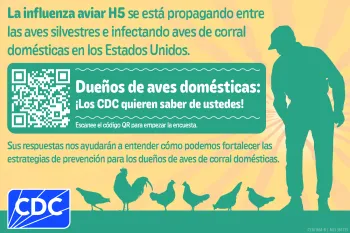
Los Centros para el Control de Enfermedades (CDC en Inglés) están interesados en saber más sobre los dueños de aves de corral domésticas y sus aves. La encuesta anónima pregunta sobre:
● Las características de los dueños de aves de corral domésticas, sus familias y sus aves.
● Lo que saben sobre la influenza aviar H5, y los signos y síntomas de la influenza aviar H5 en las aves y los seres humanos.
● El riesgo percibido y las preocupaciones que tengan sobre la influenza aviar H5 en sus aves de corral domésticas, sus familias y ellos mismos.
● Sus actitudes sobre la notificación de aves enfermas o muertas y las medidas de protección, como vacunar sus aves.
● Las prácticas que usan para proteger a sus aves y protegerse a sí mismos contra la influenza aviar H5.
Los CDC usarán los resultados de la encuesta para mejorar las actividades de prevención de la influenza aviar H5.
News and Detections
Check out these links to get the latest detection updates:
New HPAI resource page now live!
The California Dairy Quality Assurance Program (CDQAP) has launched a new resource page on Highly Pathogenic Avian Influenza (HPAI). Stay informed with the latest updates, biosecurity guidance, and resources to help protect livestock and poultry.
Updates from the California Department of Food and Agriculture
Additional HPAI updates from CDFA are available here.

Have sick birds?
Please monitor your birds for the following symptoms:
- Trouble breathing
- Clear, runny discharge from nose, mouth, and eyes
- Lethargy or lack of energy
- Loss of appetite
- Drinking less
- Swollen eyes, head, wattles, or combs
- Discolored or bruised comb, wattles, or legs
- Stumbling, falling, or twisted neck
- Sudden death
Please report any unusual or suspicious sick or dead domestic, pet or collection of birds, to the California Department of Food and Agriculture (CDFA) Sick Bird Hotline at (866) 922-2473. 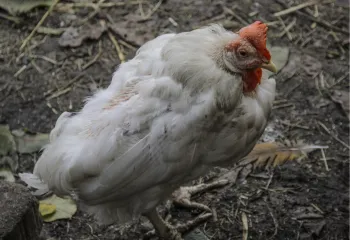 | Any suspicious wild bird deaths can be reported to California Department of Fish and Wildlife (CDFW) with this form. 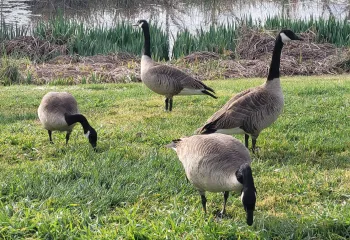 |
Bird Flu & Public Health
California Department of Public Health
The California Department of Public Health provides detailed information about influenza in animals on its dedicated website. Additionally, an educational flyer on worker protection from Bird Flu is available in English and Spanish, outlining preventive measures, symptoms, and the importance of reporting suspected cases to help mitigate the spread of the virus.
Biosecurity Tips
An Activity about Disease Transmission - Dr. Rodrigo Gallardo
Disease Transmission and Practical Biosecurity - Dr. Maurice Pitesky
- Backyard Poultry Disease Basics (RootSimple Podcast)
- Highly Pathogenic Avian Influenza (HPAI): a biosecurity perspective for youth poultry producers
- Isolation and Quarantine (UCD)
- Preparing for Highly Pathogenic Avian Influenza (ChickenWhisperer - UCD)
Additional Resources
- California Dairy Quality Assurance Program- Bird Flu Homepage
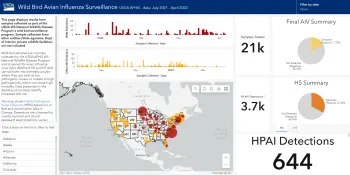
HPAI Maps
Check out this new Wild Bird Avian Influenza Surveillance Dashboard by the United States Department of Agriculture (USDA). Please note, the dashboard only displays results from samples collected as part of the USDA WS National Wildlife Disease Program's wild bird surveillance program.
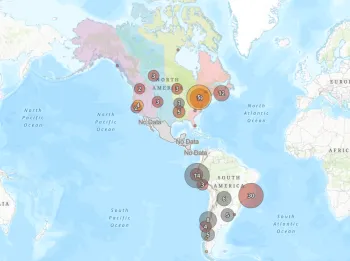
A team from UC Davis and UC ANR has created an interactive map showing the spread of Highly Pathogenic Avian Influenza (HPAI) among wildlife and domestic animals over two years, from North to South America.

